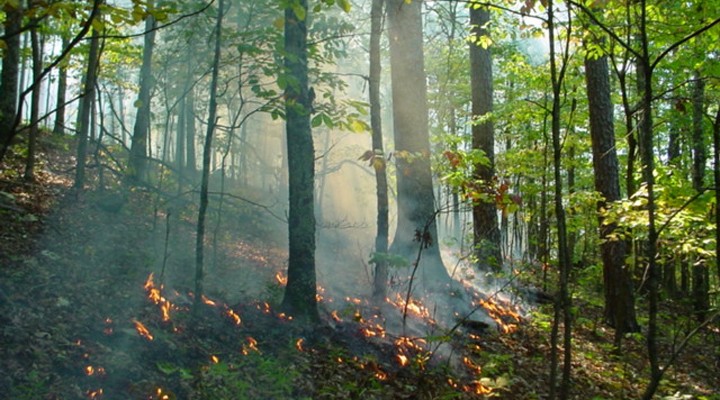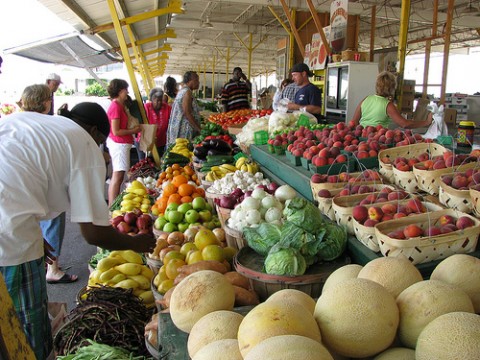Tag Archive: network building
April 29, 2020
Currently engaged in a number of state-wide and regional network-building initiatives focused on food, health and education system change, I am beginning to see some interesting patterns across efforts to build connectivity-based and more fluid movements for change. Watching these dynamics unfold, I can’t help but come back to one of our foundational frameworks at IISC, what we call the R-P-R Triangle, for all that it has to offer our thinking about network strategy and success.
This framework (see below) makes the point that any kind of collaborative endeavor is a multi-dimensional affair when it comes to the core determinants and definitions of success. Of course, many of us come to “net work” and collaborative efforts eager to see results, to work in new ways to have greater impact on the issues that we care most about. Without concrete results or “wins,” it is hard to keep people engaged and morale up. But results are just a part of the story, and the big results may take some time in coming.
Read More
March 15, 2016

I’ve had the pleasure of supporting some important work happening through The Nature Conservancy’s Fire Adapted Communities Learning Network. According to the FAC website, a fire adapted community “acknowledges and takes responsibility for its wildfire risk, and implements appropriate actions at all levels.” Actions in these fire-threatened communities “address resident safety, homes, neighborhoods, businesses and infrastructure, forests, parks, open spaces and other community assets.” In addition, the point is made that every community is unique in terms of circumstance and capacities, so that local action may look different from place to place.
While there may be differences from community to community in the FAC network, it is also united by a common belief that there is need for more of the right kinds of fire that support the regenerative capacity of ecosystems. As I’ve learned from members of these communities, “cool fires” can be used to help build resilience into forests, feeding and encouraging new growth and diversity. This is actually a practice that goes back a long ways in indigenous communities, which used “prescribed burns” to support the long-term health of the forested landscape, to enrich soil, clear pathways for fauna and support biodiversity, which supported the health of their own communities. However, many of these practices were outlawed and the result of the newer management practices was a drop in health of the forests and a rise in vulnerability of those living in or near them. As one person in the network recently put it, they are now trying to “reclaim” fire and “give fire back to people.” Read More
June 17, 2015

Photo by Rebecca Siegel
Still fresh on the heels of the 5th annual Food Solutions New England Regional Food Summit, many attendees seem to be buzzing about the two days of conversation in Boston that focused on the 2060 Vision, racial equity commitment, food chain workers campaigns, and the challenge of creating “fair price” across the food system. It was my privilege to facilitate for a third year, and to help set the tone for the evolving spirit of regionalism and ongoing work of network building. I opened with the following story, which some of you may know well, and comments. Read More
March 12, 2015
“We add value to society-at-large when we dare to connect.”

This week I was in a conversation with someone who asked me what the difference is between “networking” and “network building.” I’ve been asked this before, and certainly do not purport to have the right answer, but it became an opportunity to deepen the conversation that has been evolving in my work and head about what it means to develop potential through and in networks. Here is what popped to mind as a response, actually in the form of a series of questions
Are you thinking about others?
Read More
August 14, 2013

|Image from Lefteris Heretakis|http://www.flickr.com/photos/95935106@N00/3665497225/in/photolist-6zUCC2-6BpvKw-6GGt4g-6GGXZc-6GGYot-6GHhqz-6GHp7H-6GHpp4-6GHqMH-6GLRUo-6GM1BA-6GMkcC-6GMrR7-6GMsPL-6GMtfG-6GMuoE-6TQXh7-6TQYpj-7bbit4-7bbkSv-7bbne6-7bf7K5-cBB2DY-edAhP2-cf78xW-cBAZTs-cBB4id-cBB5wU-9Nzeot-9NC3F5-eNPtU8-dnk5ox-dw5A4n-f7FkSo-a62gzE-9sPsft-b34pnk-dw5Buk-8bqEKN-8bqEMy-8bnotB-8bnowM-8bnoux-8bqEqN-8bnojc-8bqEyf-bG7p8c-8bqEAY-8bnovv-8bqEty-8bnocX|
Last week I had the opportunity to participate in a gathering, convened by the Garfield Foundation, of “network building” practitioners interested in advancing this field for the sake of making more progress around fundamental social change, including greater social equity and sustainable communities. The launch point for our discussions was the successful RE-AMP network that Garfield has supported for several years now in the midwestern United States. We began by looking at a framework for change that has emerged from RE-AMP’s experience, while acknowledging that this is a data point of one. From here we talked about what we are all learning in our respective experiences, and perhaps more importantly, what we do not know. There were several themes that I heard emerging in our conversations, and I wanted to highlight one in this post, which is reflected in the title – how we begin and bound our efforts matters. Read More
August 7, 2013

At IISC we like to define the success of collaborative change efforts in multi-dimensional ways. In particular, we make reference to results, process, and relationship elements. Results are what we typically think of as the “measurable” outcomes of a change undertaking – policy change, livable wage, job creation, healthier communities, etc. Process has everything to do with the how of the work – how we approach our change efforts, the steps we take, how work is shared and by whom, and with what spirit. Relationship is about both the quality of interpersonal connections as well as how people relate to the work itself. From what one might call an “old school” mindset, there is an assumption that process and relationship are only important insofar as they help to achieve results. Read More
April 3, 2013
“Structure is purpose expressed through design.”
– Marjorie Kelly, Owning Our Future
Detroit Voices: A Community Calls Out for Change from Phase 4 Media on Vimeo.
The new food movement, which is really several related but distinct movements, is a beacon of hope in this country. You can find evidence of this in many diverse settings, from Flint, Michigan to Northeast Iowa to northern Vermont to Oakland, California. While there are important distinctions in terms of emphasis and core players, one cross-cutting theme appears to be that we must create new structures to better nourish ourselves (calorically, economically, socially) through policy change, different land use patterns, new infrastructure, stronger relationships with ecosystems, new enterprises, and community building. From the growing number of food policy councils, to alternative financing mechanisms, practices like permaculture and agroforestry, and more intentional network building, people are setting the stage for some significant societal shifts. Read More
June 27, 2012

This famous E.M. Forster quote takes on new meaning in this age of quantum waves and particles, Twitter, and Facebook. But the depth of what he was saying is timeless: connect with one another through old and new means to realize that we are one family, one world, one universe.
At IISC, we are committed to deepening our connections, fostering collaborative efforts, and learning together in service of social transformation. And so it is that IISC is formally announcing the launch of our blog, as another way that we can connect and learn from you in our common quest to build a more just and sustainable world.
In that spirit, I want to share with you some of what we have been learning across the three areas that we believe are foundational to the work of social transformation: network building; diversity, equity and inclusion; and, in the words of Martin Luther King, Jr., “the love that does justice.” Read More
June 27, 2012

This famous E.M. Forster quote takes on new meaning in this age of quantum waves and particles, Twitter, and Facebook. But the depth of what he was saying is timeless: connect with one another through old and new means to realize that we are one family, one world, one universe.
At IISC, we are committed to deepening our connections, fostering collaborative efforts, and learning together in service of social transformation. And so it is that IISC is formally announcing the launch of our blog, as another way that we can connect and learn from you in our common quest to build a more just and sustainable world.
In that spirit, I want to share with you some of what we have been learning across the three areas that we believe are foundational to the work of social transformation: network building; diversity, equity and inclusion; and, in the words of Martin Luther King, Jr., “the love that does justice.” Read More
March 3, 2011

Over a year ago, during a network building community of practice meeting, future IISC board member, Idelisse Malave, suggested that I take a look at the RE-AMP Energy Network as a successful example of a multi-organizational network. I made some initial calls to their coordinator and ended up dropping the ball (oh look, a squirrel). Then a few weeks ago I was alerted to a new case study from the Monitor Institute about that very network. And so we have Transformer: How to build a network to change a system, a wonderful report about what has contributed to the successes of a regional network that has been making great headway in reducing greenhouse gas reductions in the Midwest over the past six years. Lead author, Heather McLeod Grant, a past participant in our network building community of practice, renders a great service in elucidating six key and contributing principles to RE-AMP’s success, many of which have great resonance with our experiences at IISC around designing and facilitating complex and collaborative multi-stakeholder change efforts. Read More
February 11, 2011
 Photo by: Carija
Photo by: Carija
The following is a post by Steve Waddell in NetDev….
Last week I presented maps for a Renew Boston (RB) group. Although the maps are preliminary, they provide a good illustration of how the two methodologies used can be complementary. They present a nice case study about use of maps.
Why map? Here’re the reasons I give:
- To “see” the whole “change field”…rather than limited individual perspectives
- To create collective visions and theories of change
- To understand current relationships and how work is currently done
- To understand how relationships/work flows should change
- Define implications of changes to identify key leverage points for optimal influence and conflicts, synergies and gaps
Read More
July 22, 2010

|Photo by Natalie Maynor|http://www.flickr.com/photos/nataliemaynor/2539111053|
I have been blessed these past few months to have been in steady conversation with Adam Pattantyus of Merrimack Management Associates. Adam’s background is a fascinating blend of military, industrial engineering, management, and clean technology professional experiences. He is deeply thoughtful and committed to helping bring about the transition to more sustainable ways of being. And he is the co-purveyor of a promising product and service in the form of an on-line operational infrastructure for collaborative action. I learn so much from each of our interactions, and our meeting last week left me thinking about how to make much needed collaboration both easier and more ambitious for those interested in realizing deep social change.
Read More









 Photo by:
Photo by: 